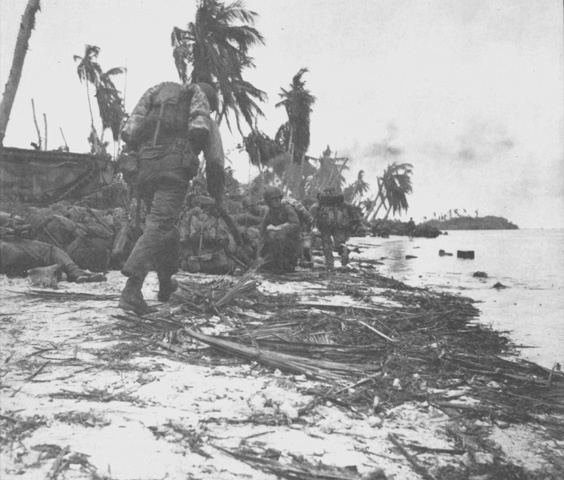The Battle of Guam took place from July 21 to August 10, 1944, as American troops aided by Chamorros, the native people of the Mariana Islands, sought to retake the island of Guam from the Imperial Japanese Army. Guam is the largest island in the Mariana Islands chain and had been a possession of the United States since 1898. In 1941, the Japanese captured the island on the same day as the attack on Pearl Harbor, but because of time zone differences, it was officially December 8. By taking back Guam, the United States would not only liberate the U.S. territory, but also acquire several Japanese airfields and a harbor that would be of use for future operations in the Pacific.
The battle was slated to begin soon after Allied troops landed at Saipan on June 15, but the heavy resistance the troops faced at Saipan caused the landings on Guam to be postponed for a month. During the delay, American forces launched air attacks and bombarded Japanese shore positions to clear the way for landing crafts. Finally, on July 21, a landing force of 55,000 Americans, comprised of both Army and Marine units, began to come ashore on the island’s west coast. They faced opposition from 19,000 Japanese soldiers who launched powerful attacks over the following days, usually at night. The Americans established two beachheads on the shore which they finally linked after a week of fighting, allowing them to significantly weaken their opponents. Two more weeks of fighting ensued, but the Japanese were being continually pushed north and did not have the strength in numbers to pose any formidable counterattacks. On August 10, organized Japanese resistance ended, and Guam had successfully been taken back by the American forces.
After the battle ended, Guam was made into a base for Allied operations in the Pacific. The Navy Seabees, the naval construction force, built five large airfields on the island, with the assistance of battalions of African-American aviation engineers. Although the fighting was officially over, as it was on many Pacific islands, several Japanese soldiers held out and continued to resist American forces. The hold outs occasionally ambushed American troops, causing random casualties on the island. One Japanese holdout stayed on the island living in a cave until 1972, when he was finally discovered by hunters. The man surrendered and returned to Japan, having remained on the island for 28 years after the battle. Today, Guam is an unincorporated and organized territory of the United States. Every year on July 21, its residents celebrate Liberation Day, marking the arrival of US troops on Guam.
Suggested Reading:
Army History: The Battle of Guam
Encyclopedia Britannica: The Battle of Guam
Gordon Rottman, Guam 1941 & 1944: Loss and Reconquest (Bloomsbury, 2013)








